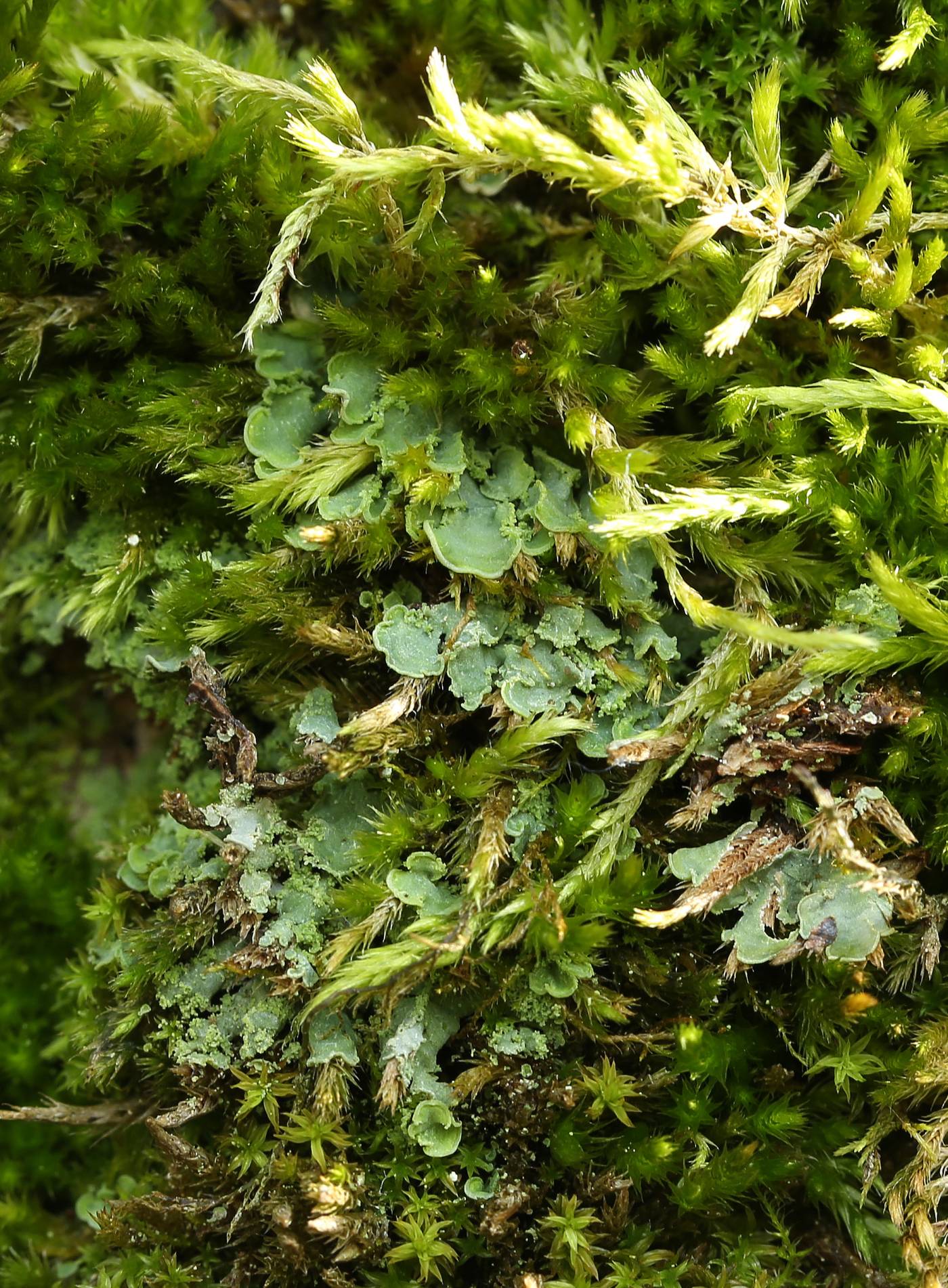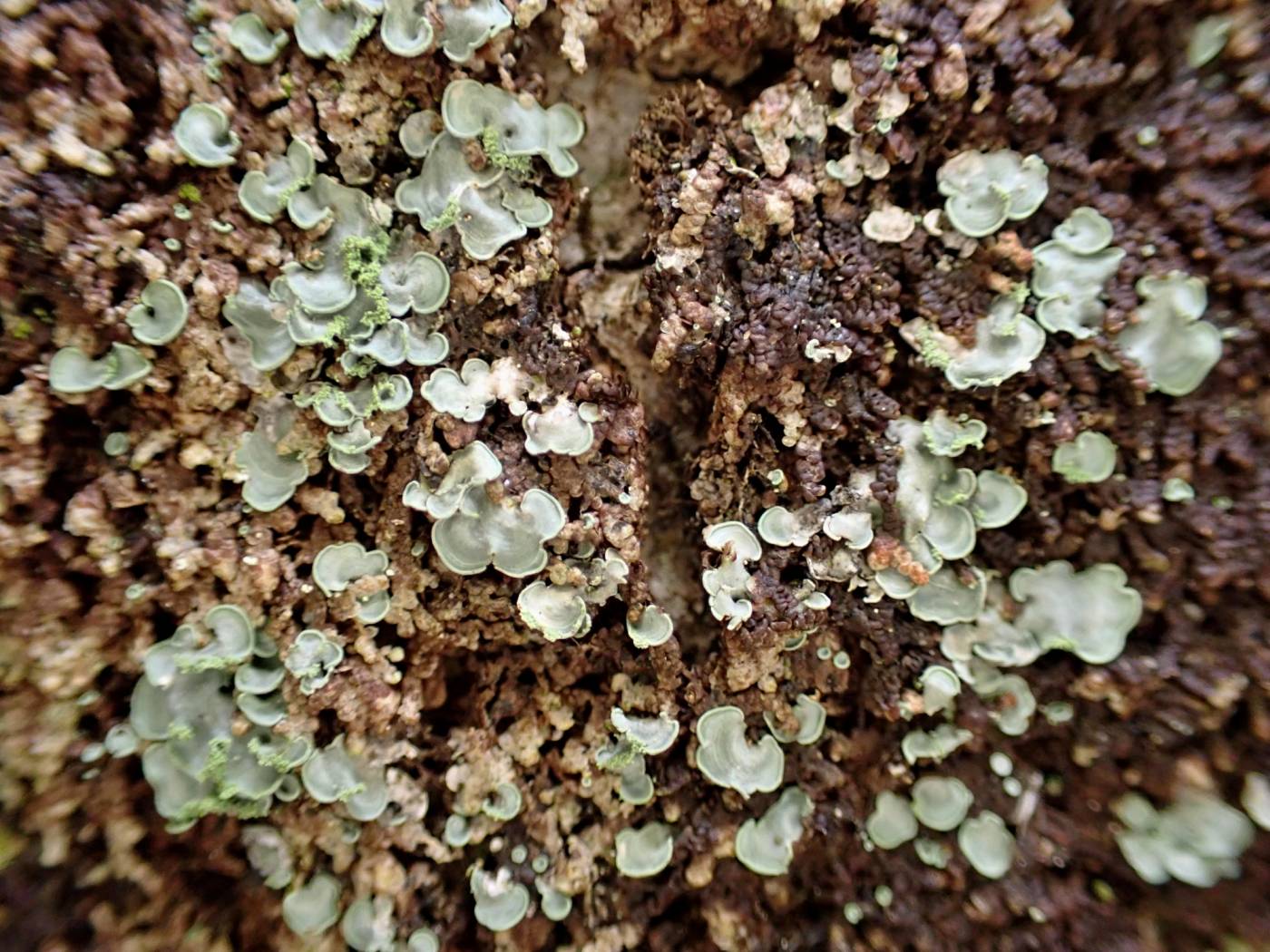A species hard to confuse. Its thallus is composed of grey-green squamules with thick margins that resemble shells. Soralia are usually present, while apothecia are formed sporadically and reported mainly from tropical areas. The species was classified as basidiolichen by some authors in the past because it resembles the basidiolichen Lichenomphalia hudsoniana by the squamules.
Normandina pulchella usually overgrows liverworts of the genus Frullania that occur on deciduous trees and eventually also rocks. Sometimes, it is found directly on a bark or on thalli of macrolichens. Its typical habitats are natural open forests and scattered greenery such as parks. In Europe, the lichen is widespread and relatively common in many regions, such as on the Atlantic coast or in mountain areas with a high proportion of well-preserved forests and low air pollution. In the Czech Republic, the species is currently rare. Over ten of its recent localities in the country are known, but in most of them, the populations are small. Most common it is currently on serpentinite outcrops in the valleys of the rivers Želivka and Křemže.
Literature: Liška J., Palice Z. & Dětinský R. (1998): Změny v rozšíření vzácných a ohrožených lišejníků v České republice I. – Příroda, Praha, 12: 131–144.
taxonomic classification:Ascomycota → Eurotiomycetes → Verrucariales → Verrucariaceae → Normandina
Red List (Liška & Palice 2010):EN – endangered
Red List (Malíček 2023):C3 – endangered
Occurrence in the Czech Republic
All records: 29, confirmed 27. One click on a selected square displays particular record(s), including their source(s).




